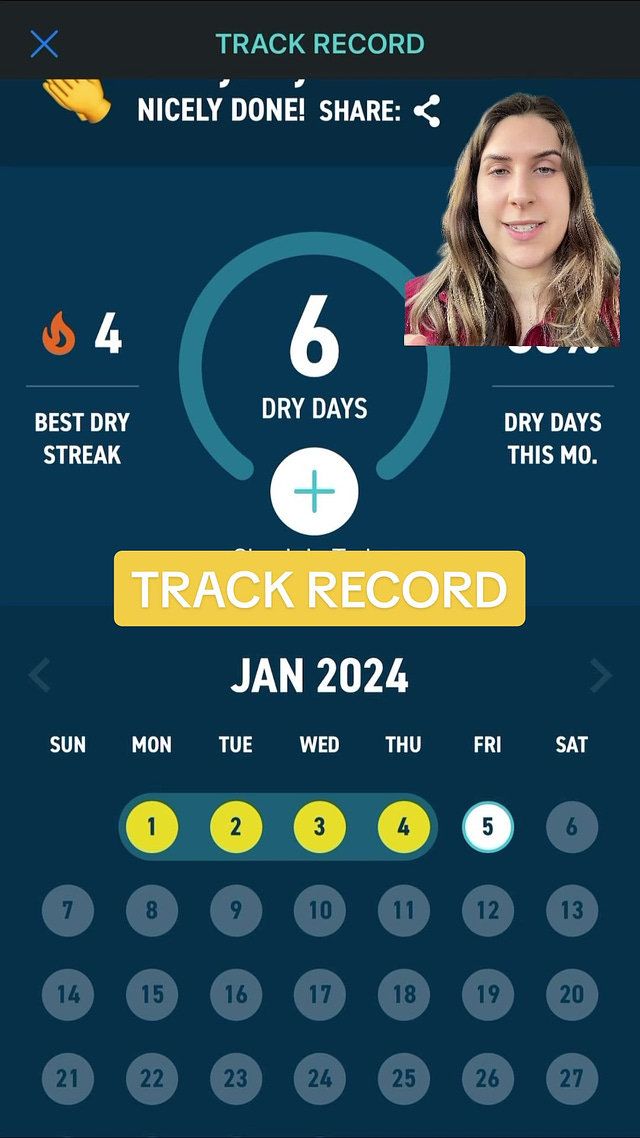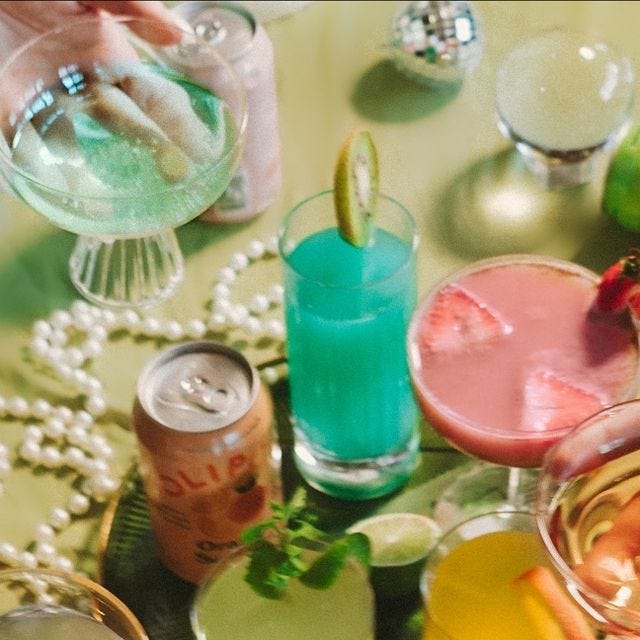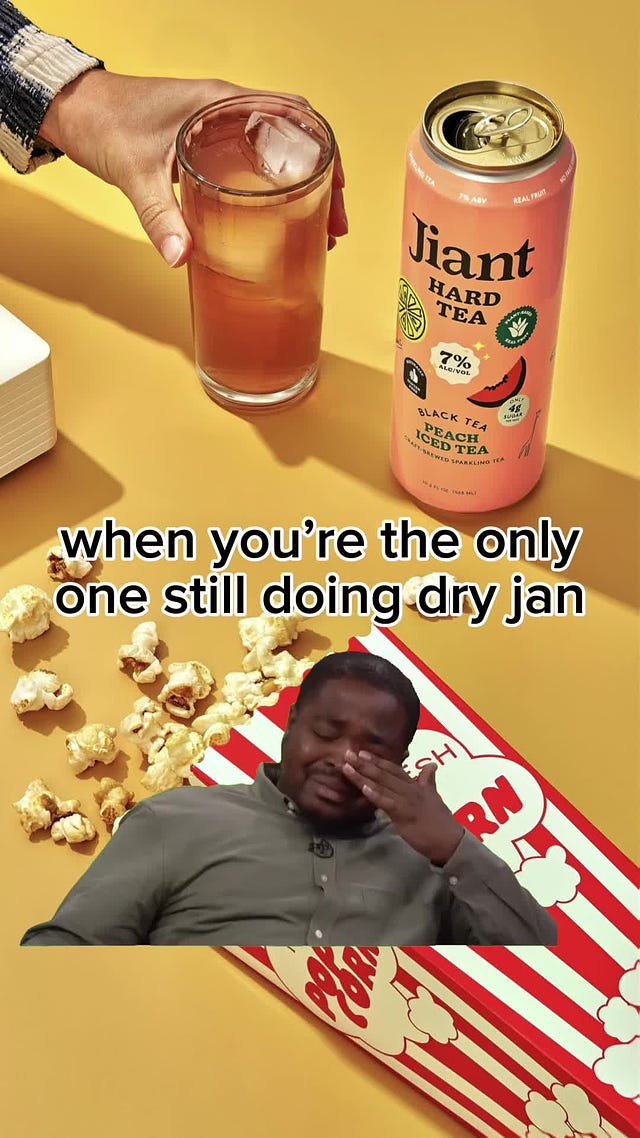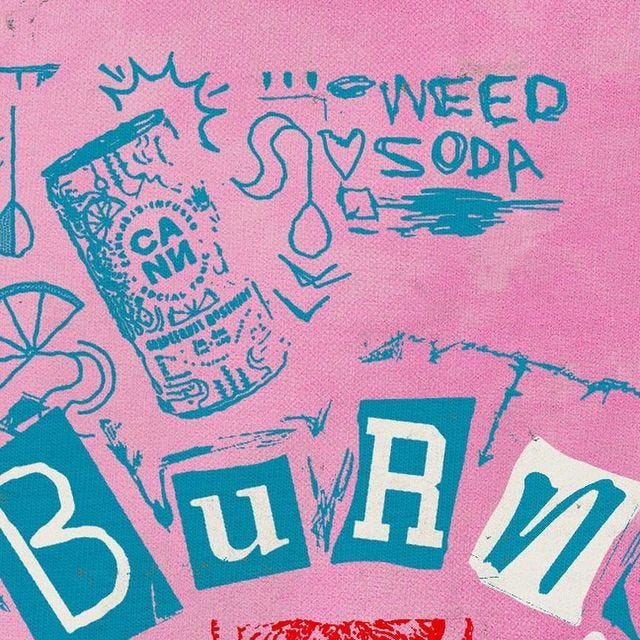Issue #8: Dry January Marketing That Isn’t All That Dry
How beverage brands are participating in the sober-curious conversation.
Hi! Hope everyone has had a good week. January is nearly over, and I didn’t want to let this month pass by without talking about something I’ve been seeing a lot of lately: the sober-curious movement, and more specifically, the rise of Dry January as a marketing moment. Let’s get into it.
TLDR:
Sober or sober-curious sentiments and the recent popularity of Dry January have become huge brand marketing moments in the past few years, ever since the pandemic.
All types of beverage brands are participating, including NA (non-alcoholic) brands, alcohol brands with NA products, soft-drink brands, and regular alcohol brands that don’t even carry NA products.
Each category of beverage brand positions their products differently, but I think the best of them successfully create luxury experiences around their NA products that rival the marketed experience of alcohol.
It seems like everyone is partaking in some form of Dry January this year. Whether it’s fully cutting alcohol out for the month, or just participating in ‘Damp January’ (scaling back on alcohol consumption), it’s no surprise that the month of January, following the blur of the holidays and rife with sentiments of ‘new year, new you,’ is prime time to take a break from drinking. But this year, the movement seems bigger. As more people engage in the sober-curious movement and explore alternatives to alcohol (especially Gen Z and especially in the wake of the pandemic), I've been seeing brands – both non-alcoholic beverage brands and alcoholic beverage brands – launch Dry January campaigns. Let’s take a look at a few examples:
A small alternative to alcohol brand
A big alcohol brand that launched a NA product
A soda brand
An alcohol brand with no NA product
A Small Alternative to Alcohol Brand
One of the most popular NA brands that has popped up in recent years is Ghia, a spirit-free aperitif that has a chokehold on the sober-curious TikTok girlies. While I’ve never actually tried their product, I’m intimately familiar with Ghia based on a pure adoration of the brand. They represent everything that alcohol brands seek to evoke – leisure, aesthetics, celebration, joy, coolness – while selling an entirely non-alcoholic product. Just take a look at their Instagram: amidst images of their product in fancy cocktail glasses and garnished with rosemary sprigs, there are #feelslikeghia mood board images, shots of gorgeous homes with the sunlight hitting a bottle of aperitif just right, and how-to videos featuring pretty people mixing drinks. It’s screaming: You can have all of this, without the alcohol. Your life can be fun/cool/beautiful without the alcohol (and with the addition of Ghia products, of course). Ghia truly feels like one of the first brands to do that, so I give them a lot of credit.
There are so many other trendy NA brands out there right now, quite a few of which are run by celebrities like Blake Lively, Katy Perry, and Bella Hadid. There’s an NA store in my neighborhood that l occasionally pop into, and through this research, I’ve come to understand that the best NA brands do a really good job of selling their products as luxury experiences, even if the basic ingredients come down to carbonated water and fruit juice. With well-done packaging, high prices, and a cool brand, small NA brands can become alcohol’s healthier, prettier, cooler little sister.
A Big Alcohol Brand with a NA Product
A bunch of your run-of-the-mill beer and liquor companies – from Blue Moon to Sam Adams, White Claw, Tanqueray, Guiness, and Budweiser – have launched a NA product. Basically, traditional alcohol brands all realized that there’s a huge market for NA beverages right now among sober and sober-curious consumers, so they’re vying for a spot. I imagine that some of these products must do somewhat well if they’re distributed at huge events like sports games or concerts (where, alas, Ghia isn’t showing up). On the other hand, these big-name brands’ NA products might be rivaled by better-tasting products like Athletic Brewing Co’s NA beer, which I’ve been seeing a lot of in New York bars as of late. Athletic Brewing even launched a Dry January tracking app, which is pretty cool.
A Soda Brand
Some brands participating in Dry January marketing aren’t vying to be in the NA space at all. Some aren’t even typically positioning themselves as alternatives to alcohol. Take Olipop, the fun, ‘healthy’ soda made with fiber and prebiotics. I’ve been seeing a lot of Dry January messaging on their social media, including a mocktail giveaway and mentions in copy of ‘avoiding hangovers.’ I think Olipop’s primary brand messaging still posits them as a better-for-you soda alternative, but by participating in the conversation around Dry January, they’re able to simultaneously position themselves as an alcohol alternative and see where it takes them.
An Alcohol Brand with No NA Product
Alcohol brands without NA products are even engaging in the cultural conversation around Dry January, whether it’s to poke fun at it or reposition their product as the more fun alternative. Like, hey! Remember how fun alcohol was? Bet you can’t wait to come back! This messaging is, of course, masqueraded behind funny TikTok audio trends (see below) in an attempt to satirize it, but it’s kind of messed up when you think about it. Maybe I’m being too harsh (I am reading Dopamine Nation by Anna Lembke right now, which I highly recommend btw!) but alcohol is addictive and has serious effects. Maybe, just maybe, Dry January can be a good thing and alcohol brands should just stay out of it.
 Tiktok failed to load.
Tiktok failed to load.Enable 3rd party cookies or use another browser
This Tito’s ad is from last year, but still relevant.
An honorable mention also goes out to Cann, a THC and CBD drink brand that posted this to throw their hat into the Dry January ring. A little questionable since I’m not sure we should be replacing our alcohol consumption with marijuana consumption… but to each their own. (Also, their recent Burn Book post was really funny.)
That’s all for this week! See you here next Thursday.










as a poppi truther, offended by your use of the olipop case study instead (jk, jk, but this popp/ollipop strategy does work - my roommate pours her poppi into a wine glass for a more "luxurious" experience"